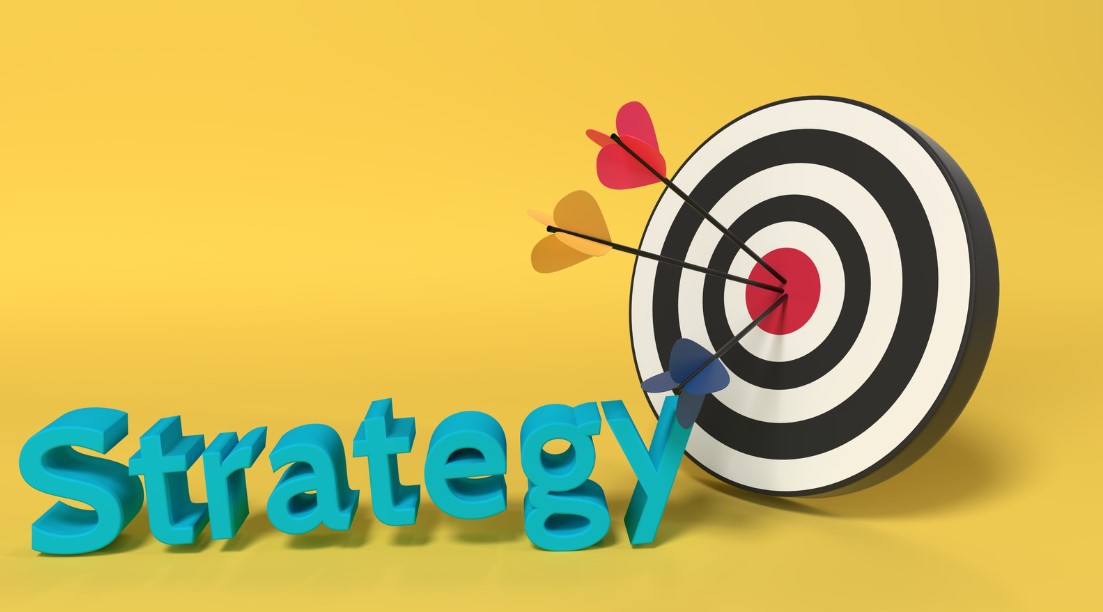A strong sales strategy plan creates the foundation for a cohesive and successful sales organization. It aligns salespeople on shared goals and empowers them to do their best work. A sales strategy is a set of decisions, actions, and goals that inform how your sales team positions the organisation and its products to close new customers. It provides a guide for sales reps to follow, with clear goals for sales processes, product positioning, and competitive analysis.
Whether you’re a seasoned sales professional or just starting out, having a solid sales strategy is key to driving sales performance and achieving sustainable sales growth. By implementing proven sales techniques and leveraging effective sales management, you can optimise your sales efforts and achieve remarkable results.
In this article, we will explore the importance of sales planning and delve into the various components of a strategic sales strategy. From sales tactics and sales optimization to sales development and sales growth, we’ll cover it all. So, let’s dive in and discover how you can accelerate your revenue through a strategic sales strategy.
What is a Sales Strategy?
A sales strategy is a set of decisions, actions, and goals that inform how your sales team positions the organization and its products to close new customers. It acts as a guide for sales reps to follow, with clear goals for sales processes, product positioning, and competitive analysis.
Key Components of a Sales Strategy
1. Set of Decisions: A sales strategy involves making strategic decisions about the target market, ideal customers, sales channels, and pricing strategies.
2. Actions: It entails implementing various sales techniques and activities to reach potential customers, including lead generation, prospecting, relationship-building, and closing deals.
3. Goals: A sales strategy establishes specific objectives and benchmarks to measure the success and effectiveness of the sales team. These goals can include revenue targets, customer acquisition rates, and sales growth percentages.
4. Sales Team and Organization: The sales strategy encompasses the entire sales team, outlining their roles, responsibilities, and collaboration with other departments within the organization.
5. Product Positioning: It defines how the organization’s products or services are positioned in the market, highlighting their unique selling points and competitive advantages.
6. Competitive Analysis: A sales strategy includes analyzing competitors to identify market trends, differentiate products, and develop effective sales approaches.
![]()
| Components | Description |
|---|---|
| Set of Decisions | Making strategic decisions about target market, customers, sales channels, and pricing strategies. |
| Actions | Implementing various sales techniques and activities including lead generation, prospecting, relationship-building, and closing deals. |
| Goals | Establishing specific objectives and benchmarks to measure the success and effectiveness of the sales team. |
| Sales Team and Organization | Encompassing the entire sales team, outlining their roles, responsibilities, and collaboration with other departments. |
| Product Positioning | Defining how the organization’s products or services are positioned in the market. |
| Competitive Analysis | Analyzing competitors to identify market trends, differentiate products, and develop effective sales approaches. |
A well-defined sales strategy serves as a roadmap for the sales team, ensuring alignment, focus, and consistent messaging. It enables sales reps to proactively identify and pursue opportunities, optimize their sales processes, and effectively position products to close new customers.
Why is a Sales Strategy Important?
A clear sales strategy serves as a map for the growth of your business. It provides direction and focus for your sales team, ensuring that they prioritize goals and activities. A sales strategy also helps to deliver consistent messaging to prospects, partners, and customers, building trust and increasing effectiveness. Furthermore, it helps to target the right prospects and customize sales approaches, making the most of every sales opportunity. Additionally, a sales strategy improves resource allocation, allowing your sales team to use their time and resources more efficiently and focus on high-potential deals.

The Benefits of a Clear Sales Strategy
A clear sales strategy has several key benefits for your business:
- Growth: A well-defined sales strategy provides a roadmap for the growth of your business, allowing you to achieve your revenue targets and expand your customer base.
- Future Planning: By setting clear goals and outlining actionable steps, a sales strategy helps you plan for the future and adapt to changing market conditions.
- Problem-Solving: With a sales strategy in place, you can identify and address potential challenges or obstacles that may arise in the sales process, ensuring smooth operations and effective problem-solving.
- Goal-Setting: A sales strategy enables you to define specific goals and objectives for your sales team, aligning their efforts towards achieving these targets.
- Management and Team Direction: A clear sales strategy provides guidance and direction to both sales managers and team members, ensuring everyone is working towards a common goal and following a unified approach.
A sales strategy also helps you maintain focus, ensuring that your team is consistently working towards the same objectives. It enables you to deliver clear and consistent messaging to your prospects, partners, and customers, building trust and establishing your brand as a reliable and valuable resource in the market. Furthermore, a well-defined sales strategy optimizes opportunities by targeting the right prospects and tailoring sales approaches to meet their specific needs.
| Benefits of a Clear Sales Strategy | Explanation |
|---|---|
| Growth of your business | By providing a roadmap for growth, a sales strategy helps you achieve your business’s revenue targets and expand your customer base. |
| Future planning | A sales strategy helps you plan for the future by setting clear goals and outlining actionable steps. |
| Problem-solving | With a sales strategy in place, you can identify and address potential challenges or obstacles in the sales process, ensuring effective problem-solving. |
| Goal-setting | A sales strategy enables you to define specific goals and objectives for your sales team, aligning their efforts towards achieving these targets. |
| Management and team direction | A clear sales strategy provides guidance and direction to sales managers and team members, ensuring everyone is working towards a common goal. |
Moreover, a sales strategy improves resource allocation by allowing you to allocate your sales team’s time and resources more effectively. By focusing on high-potential deals and optimizing their efforts, your sales team can maximize results and drive revenue growth.
The Strategic Sales Strategies
When it comes to boosting sales and closing more deals, implementing effective sales strategies is crucial. These strategies can help generate more leads and maximize revenue opportunities. In this section, we will explore some of the most effective sales strategies that businesses can employ to achieve their goals.
1. Increase Online Sales through Social Media
Social media platforms provide an excellent opportunity to reach a broader audience and increase online sales. By engaging with potential customers on platforms like Facebook, Instagram, and LinkedIn, businesses can enhance brand visibility, share valuable content, and drive traffic to their website.
2. Establish Thought Leadership
Becoming a thought leader in your industry can position your business as an authority, drawing more prospects and building trust. Share insightful industry knowledge through blog posts, articles, and educational resources. This will establish your expertise and attract quality leads.
3. Prioritize Inbound Sales Calls as Hot Leads
Inbound sales calls are often from prospects who have already expressed interest in your product or service, making them valuable leads. By promptly responding to these calls and providing personalized attention, you can increase the likelihood of closing a deal.
4. Research and Qualify Prospects
Thoroughly researching and qualifying prospects before engaging in sales conversations can significantly improve conversion rates. Understand their needs, pain points, and preferences, enabling you to tailor your approach and provide customized solutions.
5. Implement Free Trials
Offering free trials allows potential customers to experience the value of your product or service firsthand. This can build trust and confidence, increasing the likelihood of conversion. Additionally, free trials provide an opportunity to showcase the unique features and benefits of your offering.
6. Utilize Cold Calling
Cold calling may seem outdated, but when done strategically, it can be an effective way to reach new prospects. Develop a targeted list of potential customers, craft a compelling pitch, and focus on building rapport and generating interest during those initial cold calls.
7. Offer Product Demos
Product demos allow prospects to see your offering in action, providing a deeper understanding of its capabilities and benefits. By highlighting the key features and addressing specific pain points, you can guide prospects through the buying process and increase the chances of closing the deal.
8. Provide Personalized End Results
Showcasing the specific results and outcomes that customers can achieve with your product or service can be highly persuasive. Customize your sales pitch and emphasize how your offering can address their unique challenges, ultimately delivering the desired results.
9. Close Deals Confidently
Confidence plays a key role in successful sales. Displaying confidence in your product, knowledge, and sales abilities can inspire trust and increase your chances of closing deals. Maintain a positive attitude, address objections effectively, and demonstrate your expertise.
10. Nurture Existing Accounts for Future Opportunities
Don’t overlook the value of your existing customer base. Continually nurturing these relationships can lead to repeat business, upselling and cross-selling opportunities, and referrals. Stay in touch with customers, provide exceptional service, and focus on building long-term partnerships.
By implementing these effective sales strategies, businesses can increase their online sales, establish themselves as thought leaders, prioritize hot leads, research and qualify prospects, offer free trials, utilize cold calling, provide product demos, deliver personalized end results, confidently close deals, and nurture existing accounts for future opportunities.

Sales Strategy Types
Organizations can employ various types of sales strategies to meet their specific needs and goals. These strategies include:
- Inbound Sales Strategy: This strategy focuses on attracting leads through marketing efforts. By creating compelling content and optimizing visibility, organizations aim to draw potential customers to their offerings.
- Outbound Sales Strategy: Unlike inbound sales, this strategy involves actively reaching out to potential customers. It typically includes activities such as cold calling, email campaigns, and targeted outreach to generate leads.
- Value-Based Selling: This strategy emphasizes highlighting and showcasing the unique value and benefits of a product or service. By demonstrating how their offerings can solve customers’ pain points and deliver value, organizations aim to differentiate themselves from competitors.
- Consultative Selling: With this strategy, organizations focus on advising customers and offering tailored solutions. By understanding customers’ needs and providing expert guidance, sales reps build trust and establish themselves as valuable partners.
- SPIN Selling: The SPIN selling strategy revolves around strategic questioning to uncover customer needs and pain points. By asking Situation, Problem, Implication, and Need/Payoff questions, sales reps can uncover valuable insights and position their offerings effectively.
- Solution Selling: This strategy involves providing customized solutions to specific customer problems. By understanding customers’ challenges and tailoring their offerings accordingly, organizations aim to provide comprehensive solutions that address customer needs.
- Challenger Selling: With the challenger selling strategy, sales reps challenge customers’ assumptions and provide insights that drive change. By offering new perspectives and pushing customers to reevaluate their approach, organizations can position themselves as industry leaders.
To better understand the differences between these sales strategy types, refer to the table below:
| Sales Strategy | Key Focus | Main Activities | Benefits |
|---|---|---|---|
| Inbound Sales Strategy | Attracting leads through marketing efforts | Content creation, SEO, lead nurturing | Increased brand visibility, qualified leads |
| Outbound Sales Strategy | Actively reaching out to potential customers | Cold calling, email campaigns, targeted outreach | Direct lead generation, proactive engagement |
| Value-Based Selling | Emphasizing the benefits of a product or service | Needs assessment, value proposition communication | Differentiation, addressing customer pain points |
| Consultative Selling | Advising customers and offering solutions | Needs analysis, personalized recommendations | Establishing trust, long-term partnerships |
| SPIN Selling | Strategic questioning to uncover customer needs | Situational analysis, problem identification | Insights for effective positioning, value alignment |
| Solution Selling | Providing tailored solutions for customer problems | Needs assessment, customized proposals | Comprehensive solutions, addressing specific needs |
| Challenger Selling | Challenging customer assumptions and providing insights | Provocative messaging, pushing for change | Thought leadership, industry expertise |

Sales Planning: How to Build a Sales Strategy Plan?
Building a sales strategy plan involves several key steps. First, you need to define your sales goals and identify your target customers and sales channels. Then, conduct market research and competitor analysis to understand your industry and competitive landscape. Develop customer personas to better understand your target audience. Next, outline your sales process, including the stages and milestones that lead to a sale. Finally, establish pipeline activities, create compelling sales messaging, and define success metrics to track your progress.
| Steps | Description |
|---|---|
| 1 | Define sales goals |
| 2 | Identify target customers and sales channels |
| 3 | Conduct market research and competitor analysis |
| 4 | Develop customer personas |
| 5 | Outline sales process |
| 6 | Establish pipeline activities |
| 7 | Create compelling sales messaging |
| 8 | Define success metrics |
Sales Initiatives
Sales initiatives play a crucial role in supporting sales strategies and driving revenue growth. These initiatives consist of specific actions and programs that are implemented to enhance the overall effectiveness and efficiency of the sales team. By focusing on key areas such as lead generation, sales training, performance tracking, sales enablement, sales technology adoption, sales coaching, and sales forecasting, organizations can optimize their sales efforts to achieve exceptional results.
Lead Generation
Lead generation efforts are an essential part of any successful sales initiative. By implementing strategies to attract and capture potential customers’ interest, organizations can build a pipeline of qualified leads for their sales team to pursue. This can be achieved through various methods such as content marketing, social media campaigns, email marketing, and online advertising.
Sales Training
Sales training programs are designed to equip sales representatives with the necessary skills, knowledge, and techniques to effectively engage with prospects and close deals. These programs can include product training, objection handling, negotiation skills, and customer relationship management. By investing in comprehensive sales training, organizations empower their sales team to perform at their best and achieve desired outcomes.
Performance Tracking
Performance tracking systems enable organizations to monitor and evaluate the performance of their sales team. By tracking key performance metrics such as conversion rates, sales revenue, average deal size, and sales cycle length, organizations can identify areas of improvement and take proactive measures to optimize sales performance. This data-driven approach helps in making informed decisions and driving continuous improvement.
Sales Enablement
Sales enablement tools and resources are designed to empower sales representatives with the right information, content, and collateral needed to engage with prospects effectively. These tools can include sales playbooks, CRM systems, sales automation tools, customer profiling, and competitive intelligence. By providing sales teams with the necessary resources, organizations enable them to deliver compelling value propositions and drive customer engagement.
Sales Technology Adoption
The adoption of sales technology is crucial for enhancing sales performance and streamlining sales processes. By leveraging technology solutions such as customer relationship management (CRM) systems, sales analytics platforms, sales engagement tools, and virtual collaboration platforms, organizations can automate repetitive tasks, gain real-time insights, and improve sales efficiency.
Sales Coaching
Sales coaching programs are designed to provide guidance, mentorship, and support to sales representatives. Through regular coaching sessions and feedback, sales managers can help their team members develop their skills, overcome challenges, and maximize their potential. Sales coaching fosters continuous learning and improvement, ultimately driving sales effectiveness and productivity.
Sales Forecasting
Sales forecasting is the process of estimating future sales performance based on historical data, market trends, and business insights. By accurately forecasting sales, organizations can make informed decisions regarding resource allocation, inventory management, and revenue projections. Sales forecasting empowers organizations to plan strategically and effectively respond to market dynamics.
To summarize, sales initiatives encompass a range of actions and programs that support sales strategies. By focusing on lead generation, sales training, performance tracking, sales enablement, sales technology adoption, sales coaching, and sales forecasting, organizations can optimize their sales efforts, drive revenue growth, and achieve long-term success.
Conclusion
In conclusion, a strategic sales strategy is crucial for building a successful sales organization. It serves as a clear roadmap, aligning the team towards common goals and guiding their activities. By implementing effective sales strategies such as leveraging social media to increase online sales, establishing thought leadership, prioritizing inbound sales calls, conducting thorough research and qualification of prospects, offering free trials, utilizing cold calling, providing product demos, delivering personalized end results, and nurturing existing accounts, organizations can optimize their sales efforts.
Understanding different sales strategy types and engaging in comprehensive sales planning and initiatives further enhance sales performance and drive revenue growth. Sales leaders must invest time in developing a well-defined strategic sales strategy to ensure their team’s success. By doing so, they can create a sales organization that consistently meets targets, adapts to market trends, and exceeds customer expectations.
In today’s competitive market, having a well-thought-out and effective sales strategy is vital. Organizations that prioritize sales planning, initiatives, and execution significantly increase their chances of achieving outstanding sales outcomes and gaining a competitive edge. Whether through refining existing strategies or exploring new approaches, continuous improvement and adaptation are essential to thriving in the dynamic world of sales.





